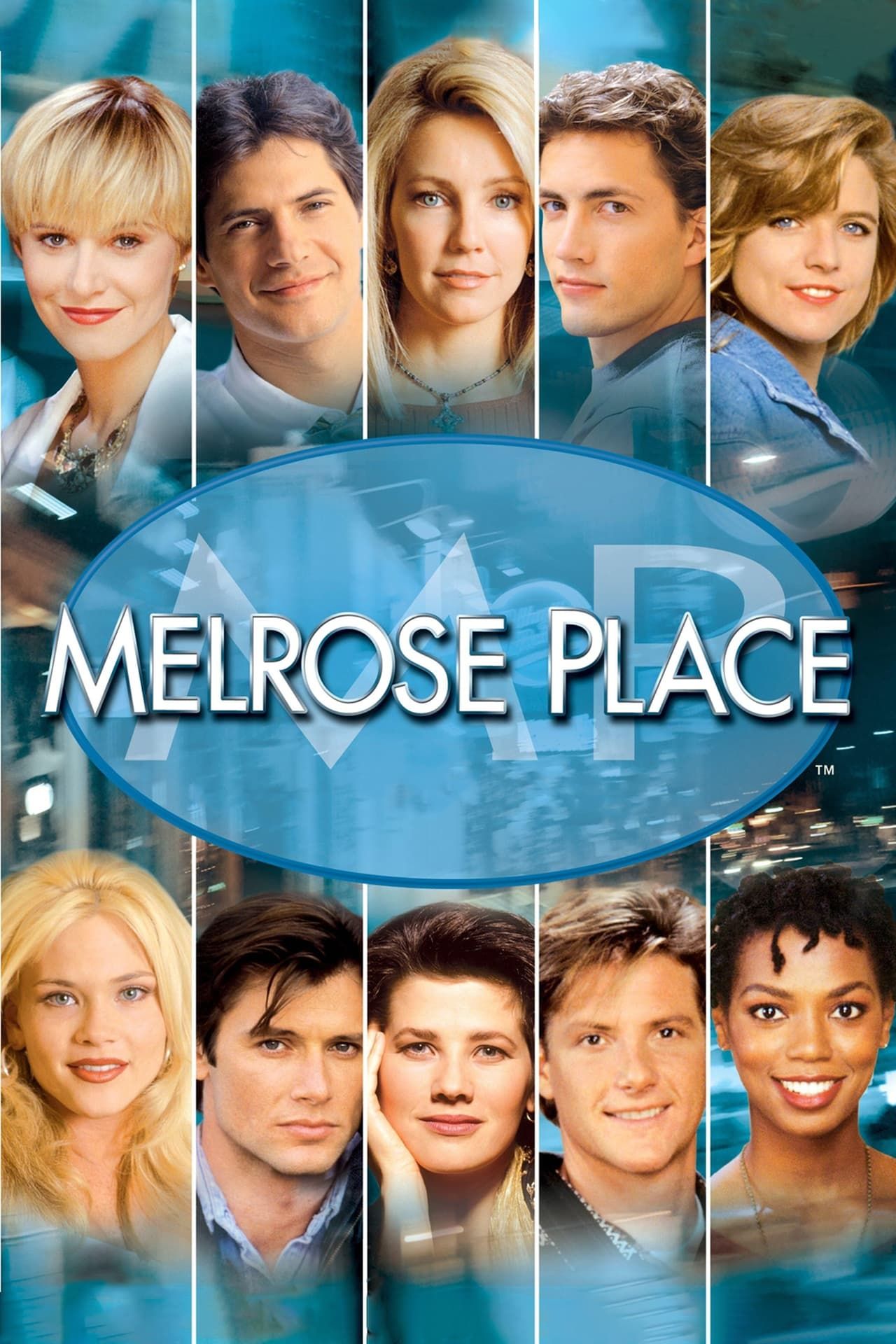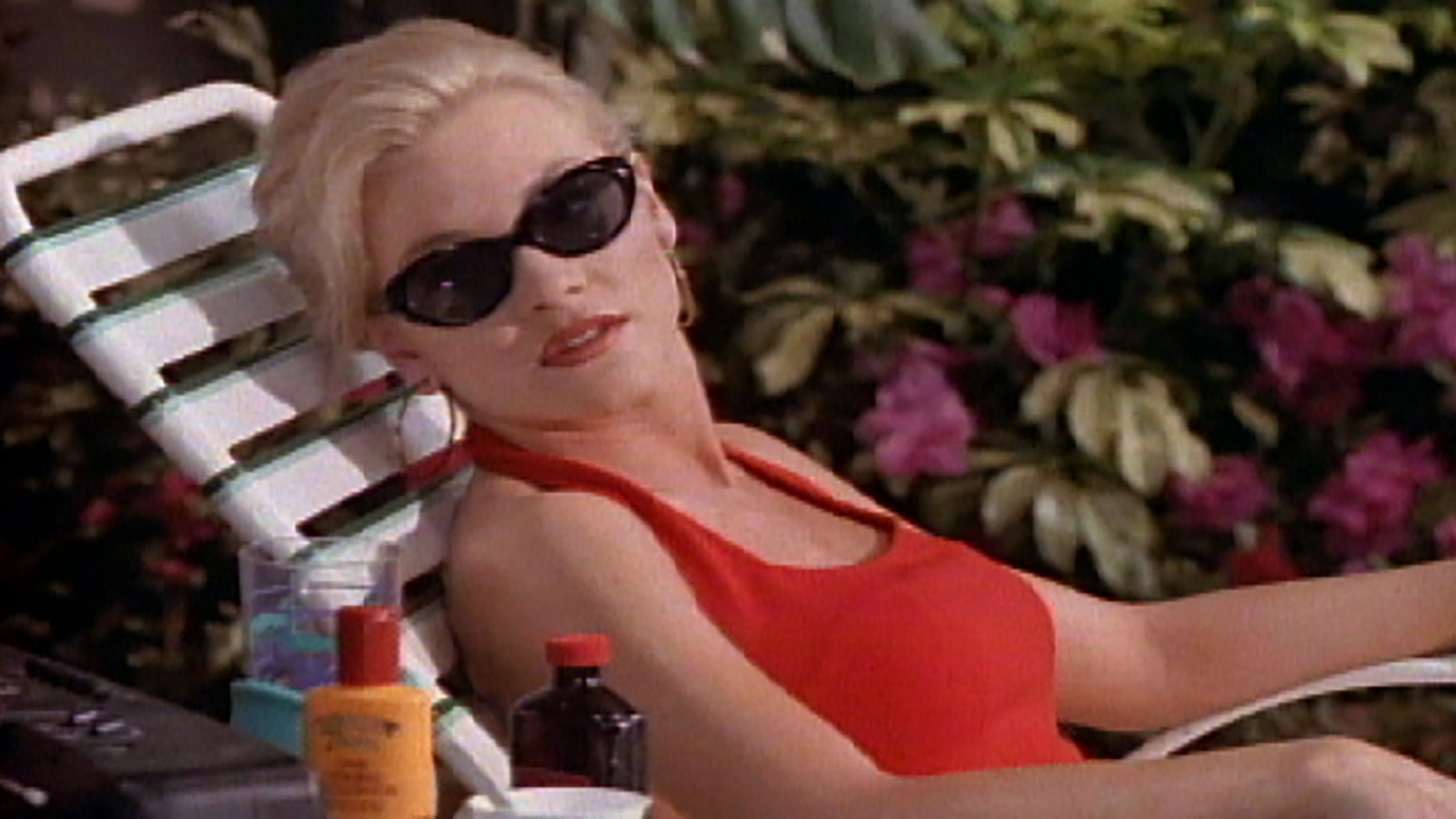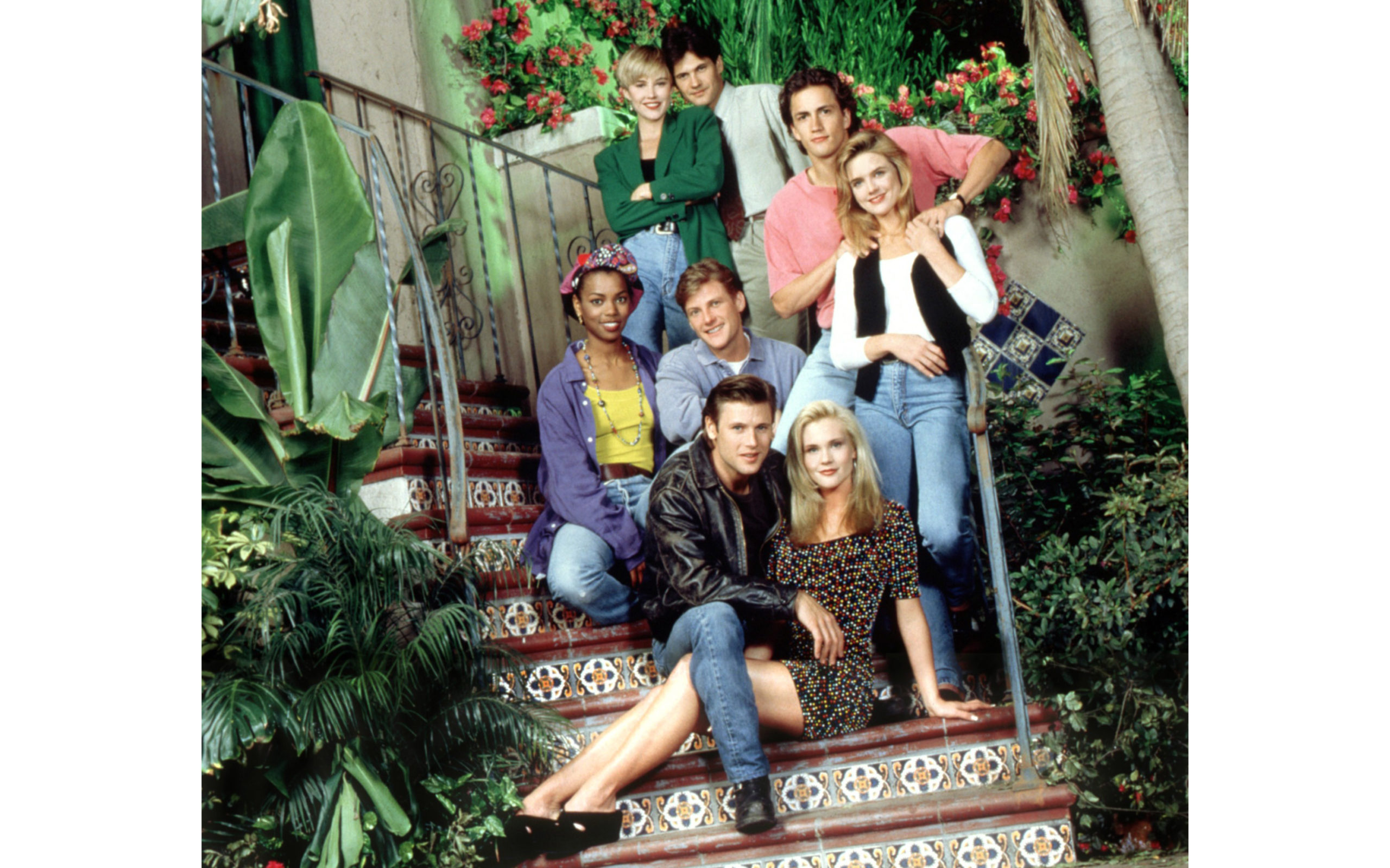For anyone who remembers the 90s, the name "Melrose Place" likely brings back a rush of memories. It was, you know, this really popular serial drama that centered on a group of friends who lived in a rather specific apartment complex in California. This show, it turns out, captured the hearts of many viewers with its stories of young adults trying to make their way in the world, all while residing in that iconic Los Angeles address.
The lives and loves of these young people living at Melrose Place in California were, quite frankly, a big part of what made the show so compelling. Each person had their own big dreams and strong drives, and as you might expect, this led to all sorts of unavoidable conflicts, surprising conquests, and, well, intense romantic moments. It was a place where friendships were tested, and, honestly, where things could get pretty wild, sometimes even blowing up, literally, as we saw with one particularly memorable event.
From the moment Alison Parker started looking for a new roommate after her previous one left, to the various twists and turns involving everyone from the mysterious Rikki to the complicated relationships between characters like Amanda and Peter, the apartment complex itself seemed to be a magnet for drama. It was a place where everyday issues, like a rent increase, could somehow spiral into much larger, more dramatic situations, and where secrets, as a matter of fact, rarely stayed hidden for long.
Table of Contents
- What was Melrose Place all about, really?
- Who lived at Melrose Place?
- The People Who Made Melrose Place Shine
- More Than Just Neighbors at Melrose Place
- Did Melrose Place have a lasting impact?
- What wild events happened at Melrose Place?
What was Melrose Place all about, really?
So, what was the core idea behind this show, you might ask? At its heart, it was a classic serial drama that revolved around a collection of friends who shared a living space in Melrose Place, California. It followed their everyday existence, their hopes, and the often-rocky paths they took to get where they wanted to be. There was always something happening, whether it was someone searching for a new housemate, like Alison Parker did, or a sudden, rather unwelcome rent hike that caused a stir among the residents, that is for sure.
The stories often touched on very personal struggles, too. For instance, there was a point where Matt and his father had a serious disagreement about what Matt wanted to do with his life. This argument, sadly, led to Mr. Fielding, Matt's dad, having a heart attack. Matt then tried his best to make peace with his father before he passed away, showing a bit of the real-life sadness that could appear in the show. In another instance, when Amanda was in the hospital due to her injuries, rumors about her and Peter's supposed romantic connection just grew stronger among everyone at Melrose, despite their clear denials. This, obviously, caused some serious issues for both Kyle and Eve, making things quite complicated for them.
The show also had its fair share of truly dramatic events that kept viewers on the edge of their seats. Think about the morning after Kimberly, well, blew up the Melrose apartment complex. Everyone was in the hospital, suffering from some kind of injury, which was a pretty intense way to start an episode, you know? Then there was the arrival of Taylor McBride, a rather shady woman from Boston. She was the wife of a restaurant chef named Kyle McBride and someone from Peter's past. She flew to Los Angeles after reading about Peter's legal trouble, and, apparently, to stir things up even more, which she certainly did.
Who lived at Melrose Place?
The residents of Melrose Place were, in a way, a collection of unique personalities, each bringing their own distinct energy to the apartment building. You had Alison, who started off looking for a new person to share her home with, setting the stage for many new arrivals. Then there was Sydney, who, when news of a rent increase went around, actually welcomed a mysterious young woman named Rikki to help her with the increased payments. Rikki, it turns out, also introduced Sydney to her guru, Martin, which added a whole new dimension to Sydney's life, and, in some respects, to the show itself.
Characters like Kimberly, who was out of town on business at one point, had their own personal lives that intertwined with the larger group. For example, during that time, Sydney, rather surprisingly, spent a romantic weekend with Michael at his beach house, adding another layer of complexity to their already tangled relationships. And, of course, Sydney was known for her dramatic actions, like when she sought revenge on Jane by simply moving into another apartment at Melrose, which, you know, was a pretty bold move.
The show also featured Matt, who dealt with family issues, and Peter, whose legal troubles brought an old acquaintance, Taylor McBride, back into his orbit. These characters, with their individual dreams and their strong motivations, were the driving force behind the inevitable conflicts, the personal victories, and the romantic entanglements that kept everyone watching. It was, basically, a place where many different lives intersected, creating a constant flow of interesting situations.
The People Who Made Melrose Place Shine
The individuals who brought the residents of Melrose Place to life were, honestly, a big reason why the show became so popular. The cast included talented performers like Josie Bissett, Thomas Calabro, Doug Savant, and Grant Show, who each played a significant role in shaping the series. These actors helped create the complex characters that viewers came to know, and, in some cases, to either love or despise, which is pretty much what you want in a drama.
Daphne Zuniga, for example, portrayed Jo Reynolds on the wildly popular program from 1992 to 1996. Her work on the show definitely brought her wider recognition and made her a familiar face to many people watching at home. Then there was Grant Show, who was cast as Jake Hanson in the hit television series in 1992. After his time on Melrose Place, he continued to appear in many other shows, including Swingtown from 2008, Private Practice starting in 2007, and even HBO's Big Love, showing his continued presence in television.
And, of course, you can't talk about the cast without mentioning Heather Locklear, who, as a matter of fact, became a very important part of the show's later seasons. She was also known for her work outside of Melrose Place, like when she starred as Princess Vespa in Mel Brooks' memorable cult comedy Spaceballs in 1987. She also had a supporting part in the science fiction horror follow-up, The Fly II, which came out in 1989, showing her range as an actor, too.
Another key player was Andrew Shue, who was born on February 20, 1967, in South Orange, New Jersey, USA. He is known not just for his acting, but also for his writing. He was a significant presence on Melrose Place, but his work also includes films like The Rainmaker from 1997 and Gracie from 2007. Here's a little more about him, if you're curious:
| Name | Andrew Shue |
| Born | February 20, 1967 |
| Birthplace | South Orange, New Jersey, USA |
| Known For | Actor, Writer |
| Notable Works | Melrose Place (1992), The Rainmaker (1997), Gracie (2007) |
More Than Just Neighbors at Melrose Place
The show was, essentially, a deep look into the relationships that formed and, often, broke apart within that apartment building. It wasn't just about people living next door to each other; it was about how their lives became completely tangled, for better or worse. You had moments of intense friendship, but then, you know, just as quickly, things could turn into bitter rivalries or surprising betrayals. The interactions between characters like Amanda and Peter, for instance, even when they denied anything was going on, created a lot of talk and trouble for those around them, like Kyle and Eve, which was really something to watch.
The personal struggles of the characters were often at the forefront. Take Matt, for example, whose difficult conversation with his father about his life choices led to a very serious health crisis for his dad. This kind of personal drama, where characters faced real-world problems and tried to make things right, was a common thread. It showed that even in a world of glamour and drama, people still dealt with very human issues, which, in a way, made them more relatable, I think.
Then there were the more unexpected connections that appeared, changing the dynamics of the group. Rikki, the mysterious young woman Sydney brought in to help with rent, wasn't just a new face; she introduced Sydney to her guru, Martin. This introduction, arguably, opened Sydney up to new ideas and, in some respects, led her down a different path. These sorts of outside influences, along with the constant flow of new relationships and old connections resurfacing, kept the residents of Melrose Place constantly reacting and evolving, too it's almost.
Did Melrose Place have a lasting impact?
Melrose Place, in its time, certainly made a big splash in popular culture. It was more than just a television program; it was a phenomenon that captured the mood of an era. The series garnered a lot of attention, and for actors like Daphne Zuniga, playing Jo Reynolds on the show definitely brought her wider recognition and put her in front of a much larger audience. It became a show that people talked about, that they tuned in for week after week, and that, you know, just seemed to be everywhere for a while.
The show's ability to combine everyday struggles with over-the-top dramatic situations meant it resonated with a broad audience. It showed the ups and downs of young adulthood, the search for love and success, and the often-messy realities of living in close quarters with other people who have their own strong personalities and desires. The way it handled these themes, often with a heightened sense of drama, left a definite mark on the television landscape of the 1990s, influencing how other shows approached similar topics, that is for sure.
It was, in a way, a defining show for many people who grew up during that time. The characters, their relationships, and the apartment complex itself became iconic. Even years later, when people mention "Melrose Place," there's a strong sense of recognition and nostalgia. It proved that a series focusing on the intricate lives and loves of a group of young adults, even with their many dreams and inevitable conflicts, could truly captivate an audience and stay in their minds for a long time, which is pretty cool.
What wild events happened at Melrose Place?
Melrose Place was, honestly, never a quiet place to live. The show was practically famous for its incredibly dramatic and sometimes utterly unbelievable events that kept everyone talking. Remember when Kimberly, in a moment that shocked pretty much everyone, actually blew up the entire Melrose apartment complex? That morning after, with everyone in the hospital suffering from some kind of injury, was a truly unforgettable scene that showed just how far the show was willing to go to create excitement, you know?
The personal conflicts often escalated into something much larger than just a simple argument. Sydney, for instance, was known for taking things to the next level, like when she got her revenge on Jane by moving into another apartment at Melrose, making sure Jane couldn't avoid her. And then there was the whole situation with Amanda being in the hospital for her injuries, and the rumors about her and Peter's alleged affair just getting stronger and stronger among everyone at Melrose, despite their clear denials. This, obviously, sent both Kyle and Eve into a spiral, creating a whole lot of emotional chaos for them, and for everyone else involved, too it's almost.
The series really leaned into the idea that the lives and loves of this group of young adults, each with their own dreams and strong motivations, would inevitably lead to intense conflicts, surprising conquests, and often very public romantic entanglements. It was a place where secrets were hard to keep, where past connections, like Taylor McBride's arrival tied to Peter's past, could suddenly reappear and cause new problems, and where, basically, you never quite knew what dramatic turn was coming next. It was, in short, a place where the unexpected was pretty much the norm.


